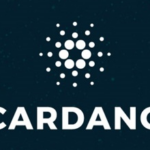Comparison of Latency between Hyperledger Fabric and Private Ethereum for…

Blockchain technology has gained significant popularity in recent years, with various platforms offering decentralized and secure solutions for numerous industries. Two prominent players in the blockchain space are Hyperledger Fabric and private Ethereum. Both platforms are known for their robust features and capabilities, but a recent study has shown some interesting insights into their performance, particularly in terms of latency.
The study compared the latency of Hyperledger Fabric and private Ethereum for different smart contract functions, such as QueryUser and UpdateUser. The results revealed that Hyperledger Fabric generally outperformed private Ethereum in terms of latency for these functions. This is a crucial finding, as latency can have a significant impact on the user experience and overall efficiency of blockchain applications.
One of the reasons for Hyperledger Fabric’s lower latency could be attributed to its architecture. Hyperledger Fabric utilizes a unique consensus algorithm known as Practical Byzantine Fault Tolerance (PBFT), which allows for faster transaction processing. On the other hand, private Ethereum relies on the Proof of Work (PoW) consensus mechanism, which is known for its slower transaction speeds.
In addition to architecture differences, the study also highlighted the impact of network size on latency. Hyperledger Fabric demonstrated more consistent latency rates across different network sizes, while private Ethereum experienced significant increases in latency as the network grew. This suggests that Hyperledger Fabric may be better suited for applications that require scalability and high performance across various network sizes.
Overall, the findings of the study suggest that Hyperledger Fabric offers a more efficient and reliable solution in terms of latency compared to private Ethereum. This insight is valuable for organizations looking to build blockchain applications that require fast transaction processing and low latency. By understanding the performance differences between these platforms, developers can make more informed decisions when choosing the right blockchain solution for their specific needs.
As blockchain technology continues to evolve and expand into various industries, performance metrics such as latency will play a crucial role in determining the success of applications. Studies like the one comparing Hyperledger Fabric and private Ethereum provide valuable insights that can help developers optimize their applications for optimal performance and user experience. With advancements in blockchain technology and ongoing research in this field, we can expect to see further improvements in latency and overall efficiency in the future.







